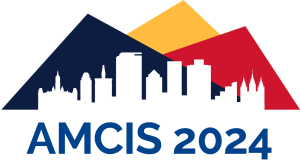Loading...
Abstract
Telemedicine represents the intersection of technology and medicine, offering remote diagnosis, treatment, and monitoring of patients. This has transformed the traditional healthcare landscape by overcoming barriers of time, distance, and accessibility, holding out the promise of improved patient outcomes and healthcare efficiency. In this study we focus on the latter, in the specific context of Medicare payments to hospitals. Hospitals have been the epicenters of telemedicine adoption for some time now, although the scale and scope has been uneven[1]. Various reimbursement policy changes are also being considered by payers to spur adoption. Medicare is one major payer, and its payments incentivizes hospitals to improve efficiency[2]. This motivates us to find empirical evidence of the impact of telemedicine implementation on Medicare payments to hospitals. Specifically, we examine Medicare payments for acute myocardial infarction since cardiac ailments are the leading cause of deaths in the US. Our data are drawn from the American Hospital Association’s annual surveys of hospitals (AHA Survey) (https://www.ahadata.com/aha-annual-survey-database ), for the years 2017 - 2021. AHA’s sample for each year consists of over 6000 hospitals who respond to a wide range of questions covering facilities, medical technologies, services, personnel, etc. In recent years, the survey also contains questions on the deployment of telemedicine in each hospital. It also reports Medicare payments to each hospital, in monetary terms and in categorical form as to whether a payment is less than, equal to or greater than the national average hospital payment. Model variables are constructed from the survey questions, with Medicare payment category as the dependent variable. We take the prevalent view in the IS literature that technology is an important input, in addition to labor and capital, to impact the dependent variable. In our setting, labor consists of hospital medical staff, while capital inputs consist of cardiac and noncardiac medical capabilities of the focal hospital. Appropriate control variables are also included. For the initial phase of the study, we use the categorical payment data as the dependent variable. For each hospital and year, we identify whether the Medicare payment was equal to, greater than, or less than the National Average Payment. We hypothesize that (i) the use of telehealth services will result in a higher likelihood of a payment that is less than the National Average Payment; (ii) the use of telehealth services will result in a lower likelihood of a payment that is higher than the National Average Payment. A logistic regression model will be developed and estimated. Subsequently, we will use payment amount as the dependent variable and confirm the relationships in the logistic regression model. Managerial implications of our findings about the efficiency returns of telehealth capabilities will also be discussed. References [1] Jain, S., Khera, R., Lin, Z., Ross, J. S., & Krumholz, H. M. (2020). Availability of telemedicine services across hospitals in the United States in 2018: a cross-sectional study. Annals of internal medicine, 173(6), 503-505. [2] Mehrotra, A., & Uscher-Pines, L. (2022). Informing the debate about telemedicine reimbursement—what do we need to know. N Engl J Med, 387(20), 1821-1823
Paper Number
tpp1250
Recommended Citation
Menon, Nirup M.; Dutta, Amitava; and Das, Sidhartha, "Virtual Healing and Medicare Payments" (2024). AMCIS 2024 TREOs. 173.
https://aisel.aisnet.org/treos_amcis2024/173
When commenting on articles, please be friendly, welcoming, respectful and abide by the AIS eLibrary Discussion Thread Code of Conduct posted here.


